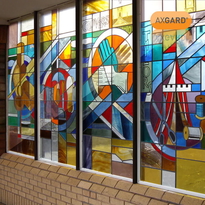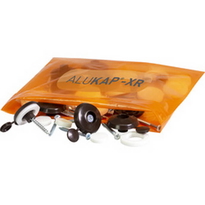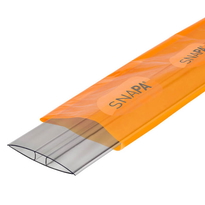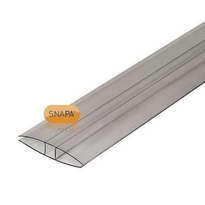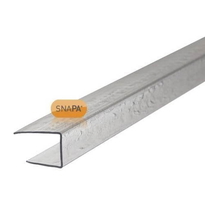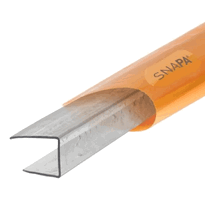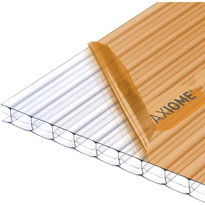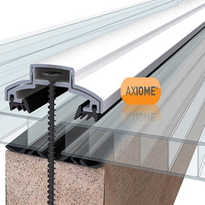Similar Categories
Raw Material Sources and Preparation
Polycarbonate sheets are produced from raw materials sourced primarily from reputable chemical manufacturers worldwide. The main suppliers include Covestro (formerly Bayer), Sabic (formerly GE), and Mitsubishi, all known for their high-quality polycarbonate resins. These companies provide virgin, UV-stabilised resins that ensure durability and consistency. The raw materials are available in forms such as granules, pellets, or pre-compounded resins, ready for processing. Manufacturers favour high purity levels to minimise impurities, which contributes to maintaining product quality. The sourcing process involves stringent quality control measures, including assessments of resin structure, additives, and flow rates. Suppliers also provide detailed certifications, guaranteeing transparency and reliability. This global network of trusted sources secures a steady supply, supporting industries that depend on durable, transparent polycarbonate sheets in the UK. Sustainable sourcing practices are increasingly being adopted by suppliers to enhance environmental responsibility.
Manufacturing Process of Polycarbonate Sheets
The manufacturing process of polycarbonate sheets begins with preparing the raw materials and then progresses to extrusion, where molten resin is formed into long sheets. These sheets are swiftly cooled and trimmed to size, ensuring they maintain their shape and quality. Additionally, modern production methods aim to improve efficiency and environmental sustainability by adopting non-phosgene processes, which reduce hazardous emissions and lower production costs. Finally, the sheets undergo finishing, quality control, and packaging to meet industry standards and customer requirements.
Raw Material Preparation
Raw material preparation is a crucial step in the manufacturing of polycarbonate sheets, as it directly influences the quality of the final product. High-quality raw materials, primarily BPA and phosgene, are meticulously sourced and tested for purity to ensure optical clarity, strength, and UV resistance. Additives such as colourants and stabilisers are incorporated during this phase to meet specific requirements. Suppliers deliver raw materials in the form of resin, pellets, or granules, all of which undergo stringent quality checks for consistency and performance. These raw materials act as the foundation for producing durable and high-quality polycarbonate sheets. The table below summarises key aspects:
| Aspect | Details |
|---|---|
| Raw Material Forms | Resin, pellets, granules |
| Quality Control | Tests for viscosity, molecular weight, contaminants |
| Additives | Colourants, UV stabilisers added during preparation |
| Final Checks | Certifications and supplier standards verified |
Extrusion and Cooling
Manufacturing polycarbonate sheets involves a critical process known as extrusion and cooling, which shapes and solidifies the material into its final form. During extrusion, melted polycarbonate is forced through a die to create continuous sheets.
Precise temperature control, typically between 230-350°C, ensures smooth flow and proper shaping. As the sheet exits the die, cooling techniques quickly solidify the material, preventing warping and maintaining uniform thickness. Common methods include cooling rollers or water baths, which help keep the sheet stable and consistent.
Proper cooling is essential for preventing residual stresses and ensuring high-quality products. Many factories in the UK utilise advanced imported machinery to achieve the best results, with cooling and solidification playing a vital role in producing durable, uniform polycarbonate sheets.
- Precise temperature control ensures quality and consistency
- Cooling methods prevent warping and residual stress
- Rapid cooling maintains uniform thickness
- Advanced machinery supports high-quality production
Finishing and Quality Control
After shaping and cooling, verifying the quality of polycarbonate sheets necessitates thorough finishing and inspection processes. Sheets are cut to precise sizes using automated rotary or guillotine blades, removing excess material and flash. Edge quality is carefully checked to ensure smoothness, avoiding burrs or fractures, which aids the sheets in fitting properly for their intended use. Polycarbonate has excellent dimensional stability with a low shrink rate of 0.6 – 0.9%, which is crucial during manufacturing and quality control. Surface treatments, such as UV protective coatings, anti-glare finishes, or textured surfaces, are applied for both durability and aesthetic appeal. These coatings are tested for uniformity and adhesion. During quality inspections, the thickness is measured, visual defects like bubbles or scratches are identified, and optical clarity is verified through transmittance tests. Mechanical properties are also evaluated, ensuring the sheets meet safety and performance standards.
Cooling and Solidification Techniques
Controlling how quickly polycarbonate cools is essential to prevent warping and defects in the final product. Proper temperature management during solidification helps reduce internal stresses that could cause distortion later on. Consistent cooling rates are crucial to ensure uniform shrinkage and dimensional stability in thermoformed parts.
Cooling Rate Optimization
Optimising the cooling rate in polycarbonate processing is vital for producing high-quality parts. Cooling too quickly can induce internal stresses that render parts brittle, while slower cooling allows molecules to relax, resulting in tougher, more durable products. Striking the right balance is essential for both efficiency and quality. Polycarbonate's molecular structure significantly influences its cooling behavior, making precise temperature control crucial. Proper cooling practices include adjusting mould temperature, controlling cooling equipment, and monitoring the part’s response during production. This helps to prevent issues such as warping or surface defects. Employing tools like water-cooled moulds and temperature sensors ensures consistent results. Furthermore, understanding how different cooling methods impact the material enables manufacturers to create better parts and avoid costly mistakes. Ultimately, careful control of the cooling rate leads to stronger, clearer, and more reliable polycarbonate sheets that meet users’ expectations and needs.
Temperature Control Strategies
Effective temperature control plays an essential role in the thermoforming process of polycarbonate sheets. After shaping, sheets are cooled to about 90°C, with cooling jigs helping to stabilise their form and prevent warping. Polycarbonate has a high heat deflection temperature of approximately 150°C, which allows it to withstand the cooling process without deforming, provided the process is properly managed. Uniform cooling methods are preferred, as localised cooling can create stress points that weaken the material. Gradually reducing the temperature ensures the sheet’s structure remains intact and minimises internal stresses. The cooling time depends on the sheet's thickness and initial temperature, requiring careful management to avoid defects. Proper solidification is key to maintaining the sheet’s strength and dimensional accuracy. Monitoring temperature closely with sensors and using automated systems helps keep processes consistent. Proper temperature control assures a high-quality, durable polycarbonate sheet ready for the next steps in manufacturing.
Stress Prevention Methods
Proper stress prevention methods are essential during the cooling and solidification stages of polycarbonate sheet manufacturing. These techniques help prevent warping, cracks, and other defects that can weaken the material. Heat management during cooling is vital to controlling internal stresses and ensuring dimensional stability of the sheets. Controlled cooling systems rapidly cool sheets after extrusion, while water baths and roller cooling provide consistent, even temperatures. Air circulation systems also expedite cooling and promote uniform solidification. Selecting the appropriate material for specific applications can reduce thermal stress. Adhering to proper procedures ensures that the sheets remain strong and reliable. To summarise: - Controlled cooling systems prevent warping - Water baths offer consistent cooling environments - Roller cooling solidifies sheets evenly - Air cooling helps achieve uniform solidification Strictly following these methods benefits both manufacturers and users, guaranteeing high-quality polycarbonate sheets that meet demanding standards.
Cutting, Finishing, and Surface Treatments
Cutting, finishing, and surface treatments are essential steps in working with polycarbonate sheets to achieve precise, smooth, and durable results. For cutting, tools such as utility knives are suitable for thin sheets, while circular saws and jigsaws are more appropriate for thicker panels, always ensuring guides are used for accuracy. It's important to secure the sheets firmly and mark cutting lines clearly. Safety equipment, such as gloves and goggles, should never be overlooked. Using the correct blade type and maintaining a steady hand during cutting can significantly improve the quality of the cut to prevent chipping. Finishing involves cleaning the surface with soap, polishing with specific plastics polish, and buffing gently. Edges can be smoothed with deburring tools, files, or gentle sanding. Surface treatments include applying UV protection, scratch-resistant films, or printing using compatible inks. These steps help enhance both the appearance and longevity of polycarbonate sheets, ensuring they meet both functional and aesthetic needs.
Ensuring Product Quality and Inspection
Assuring product quality and inspection is a critical step in the manufacturing and utilisation of polycarbonate sheets, as it guarantees that the final products meet industry standards and customer expectations.
Quality checks include visual inspections for surface imperfections, uniform colour, and clarity, along with verifying UV protection and the absence of defects such as scratches or bubbles. Measuring sheet thickness ensures consistency and adherence to tolerances, with real-time checks conducted during production.
Light transmission tests evaluate transparency and UV blocking capabilities, comparing results to industry standards. Impact resistance is assessed through drop tests to confirm durability across batches, and UV resistance is tested to assure long-term performance under environmental exposure.
These measures help maintain high standards, fostering trust and a sense of belonging among users who rely on dependable, top-quality polycarbonate sheets.
Versatile Applications and Industry Uses
Polycarbonate sheets are highly valued for their versatility, making them suitable for a wide range of applications across various industries in the UK.
Their impact resistance is exceptional, providing safety and durability in environments where protection is essential. They also offer high optical clarity, which is important for transparency-heavy uses such as skylights or display cases.
Additionally, these sheets can withstand extreme temperatures without degrading and resist many chemicals, making them perfect for harsh conditions. Being easy to shape, cut, and drill, they offer designers considerable flexibility.
In industry, polycarbonate sheets are used for machine guards, construction materials, and electrical components. They're also popular in aerospace, automotive, and safety applications, as well as for outdoor signage and hobby projects.
Their combination of strength, clarity, and workability makes them highly adaptable.
Environmental Considerations and Recycling Options
The widespread use of polycarbonate sheets brings important environmental considerations.
Manufacturing virgin polycarbonate consumes a significant amount of energy, primarily derived from fossil fuels, and releases greenhouse gases that contribute to climate change. As it's made from non-renewable resources such as oil, its extraction depletes natural supplies and exacerbates pollution.
Discarded sheets often end up in landfills, raising concerns about waste management, while the production process generates hazardous chemicals that necessitate careful disposal.
Recycling presents solutions to these issues: it reduces energy consumption, lowers greenhouse emissions, conserves resources, and diminishes landfill waste.
- Recycling saves energy and reduces emissions
- It conserves dwindling natural resources
- Diverts waste from landfills
- Creates economic opportunities in emerging industries
Conclusion
Polycarbonate sheets are produced from raw materials through a controlled manufacturing process, which includes cooling and shaping techniques. They can be easily cut, finished, and treated to meet a variety of requirements. Quality assurance ensures reliability, while their versatility makes them suitable for numerous industries. Furthermore, environmentally conscious options such as recycling help to reduce waste. Overall, polycarbonate sheets combine durability, clarity, and eco-friendliness, making them a popular choice across various applications throughout the UK and beyond.

